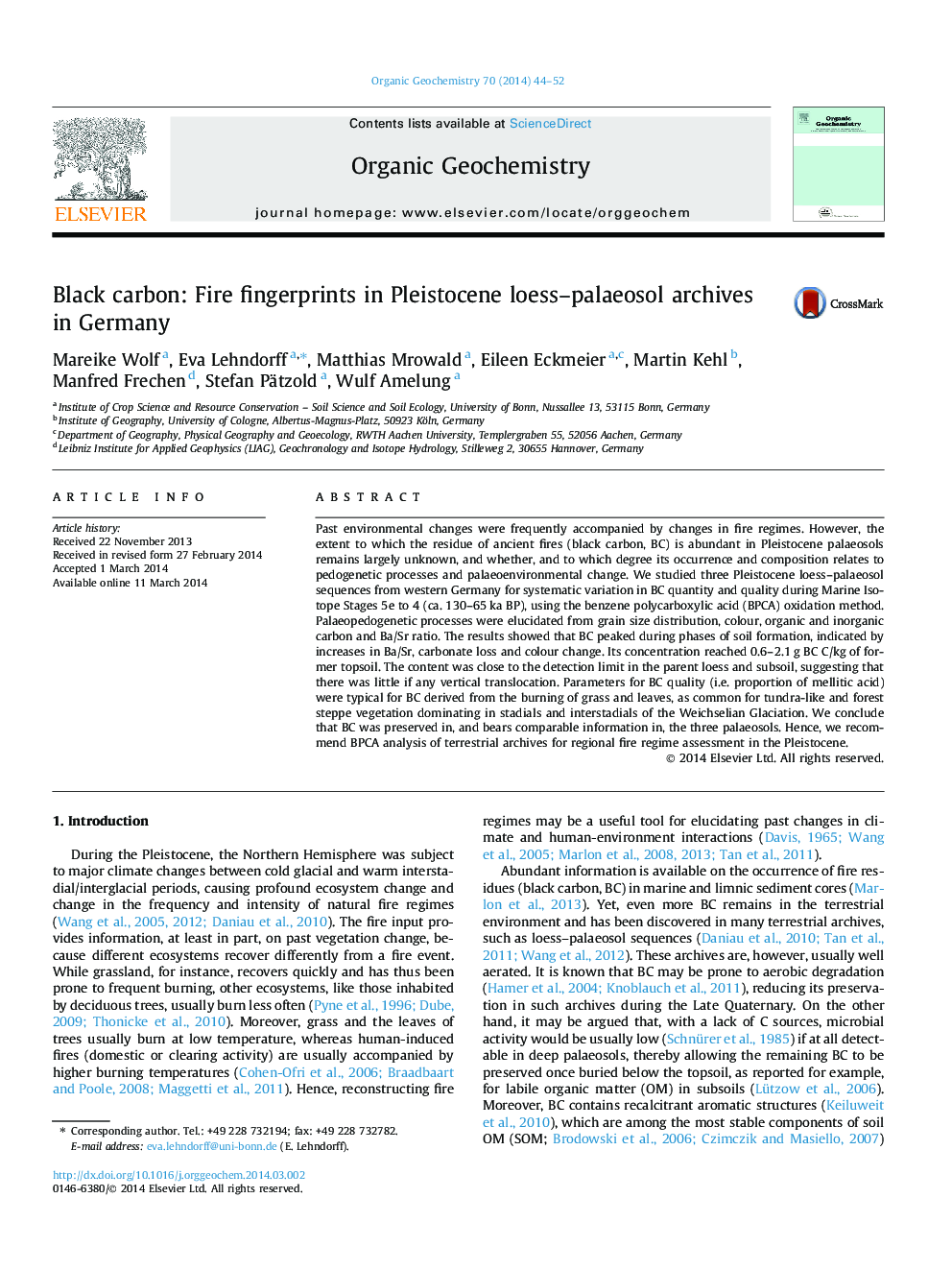| کد مقاله | کد نشریه | سال انتشار | مقاله انگلیسی | نسخه تمام متن |
|---|---|---|---|---|
| 5162054 | 1502291 | 2014 | 9 صفحه PDF | دانلود رایگان |
عنوان انگلیسی مقاله ISI
Black carbon: Fire fingerprints in Pleistocene loess-palaeosol archives in Germany
ترجمه فارسی عنوان
کربن سیاه: اثر انگشت آتش در آرشیوهای پلیستوسن لس پائئوسول در آلمان
دانلود مقاله + سفارش ترجمه
دانلود مقاله ISI انگلیسی
رایگان برای ایرانیان
موضوعات مرتبط
مهندسی و علوم پایه
شیمی
شیمی آلی
چکیده انگلیسی
Past environmental changes were frequently accompanied by changes in fire regimes. However, the extent to which the residue of ancient fires (black carbon, BC) is abundant in Pleistocene palaeosols remains largely unknown, and whether, and to which degree its occurrence and composition relates to pedogenetic processes and palaeoenvironmental change. We studied three Pleistocene loess-palaeosol sequences from western Germany for systematic variation in BC quantity and quality during Marine Isotope Stages 5e to 4 (ca. 130-65Â ka BP), using the benzene polycarboxylic acid (BPCA) oxidation method. Palaeopedogenetic processes were elucidated from grain size distribution, colour, organic and inorganic carbon and Ba/Sr ratio. The results showed that BC peaked during phases of soil formation, indicated by increases in Ba/Sr, carbonate loss and colour change. Its concentration reached 0.6-2.1Â g BC C/kg of former topsoil. The content was close to the detection limit in the parent loess and subsoil, suggesting that there was little if any vertical translocation. Parameters for BC quality (i.e. proportion of mellitic acid) were typical for BC derived from the burning of grass and leaves, as common for tundra-like and forest steppe vegetation dominating in stadials and interstadials of the Weichselian Glaciation. We conclude that BC was preserved in, and bears comparable information in, the three palaeosols. Hence, we recommend BPCA analysis of terrestrial archives for regional fire regime assessment in the Pleistocene.
ناشر
Database: Elsevier - ScienceDirect (ساینس دایرکت)
Journal: Organic Geochemistry - Volume 70, May 2014, Pages 44-52
Journal: Organic Geochemistry - Volume 70, May 2014, Pages 44-52
نویسندگان
Mareike Wolf, Eva Lehndorff, Matthias Mrowald, Eileen Eckmeier, Martin Kehl, Manfred Frechen, Stefan Pätzold, Wulf Amelung,
